Christopher B. Field
Woods Institute for the Environment, Stanford University, Stanford, CA, USA, Department of Biology, Stanford University, Stanford, CA, USA, Department of Earth System Science, Stanford University, Stanford, CA, USA, Interdisciplinary Environmental Studies Program, Stanford University, Stanford, CA, USA
Effective approaches to disaster evacuation during a COVID-like pandemic
Aug 29, 2022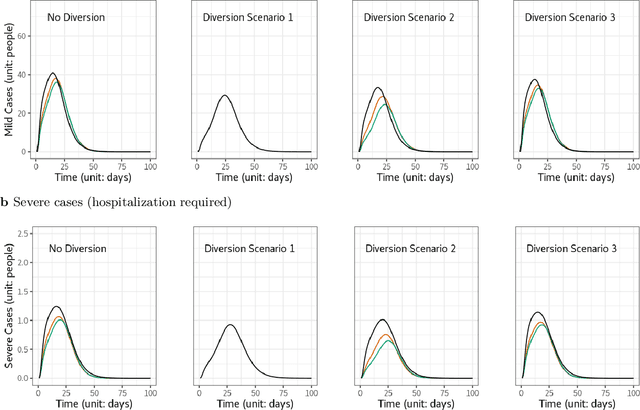

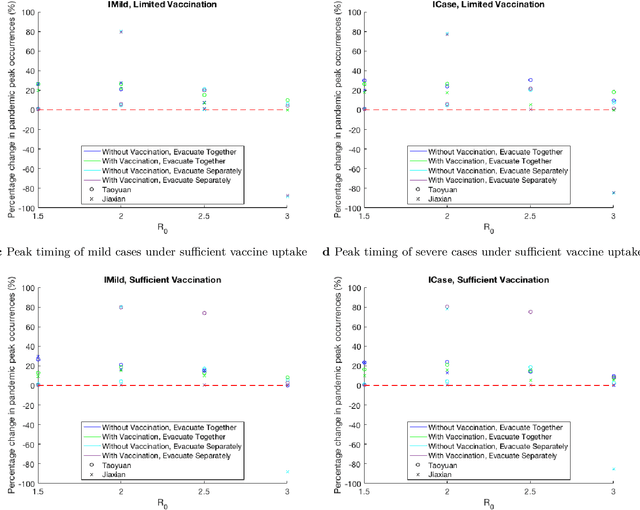
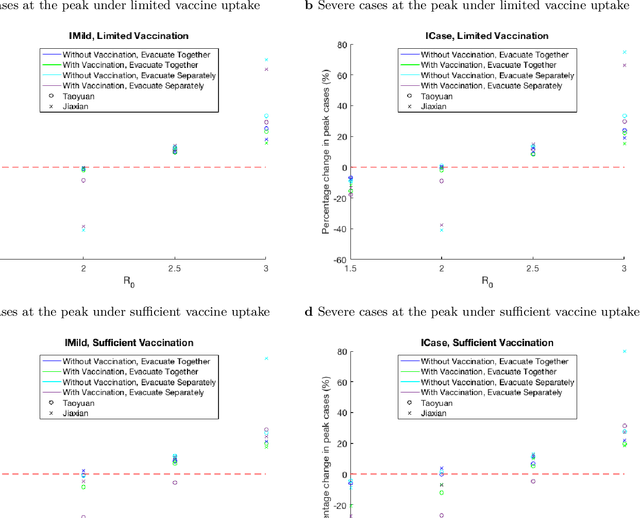
Abstract:Since COVID-19 vaccines became available, no studies have quantified how different disaster evacuation strategies can mitigate pandemic risks in shelters. Therefore, we applied an age-structured epidemiological model, known as the Susceptible-Exposed-Infectious-Recovered (SEIR) model, to investigate to what extent different vaccine uptake levels and the Diversion protocol implemented in Taiwan decrease infections and delay pandemic peak occurrences. Taiwan's Diversion protocol involves diverting those in self-quarantine due to exposure, thus preventing them from mingling with the general public at a congregate shelter. The Diversion protocol, combined with sufficient vaccine uptake, can decrease the maximum number of infections and delay outbreaks relative to scenarios without such strategies. When the diversion of all exposed people is not possible, or vaccine uptake is insufficient, the Diversion protocol is still valuable. Furthermore, a group of evacuees that consists primarily of a young adult population tends to experience pandemic peak occurrences sooner and have up to 180% more infections than does a majority elderly group when the Diversion protocol is implemented. However, when the Diversion protocol is not enforced, the majority elderly group suffers from up to 20% more severe cases than the majority young adult group.
Improving debris flow evacuation alerts in Taiwan using machine learning
Aug 27, 2022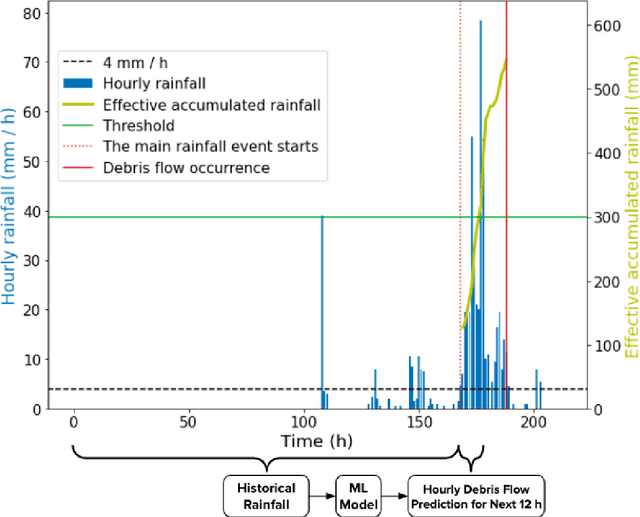

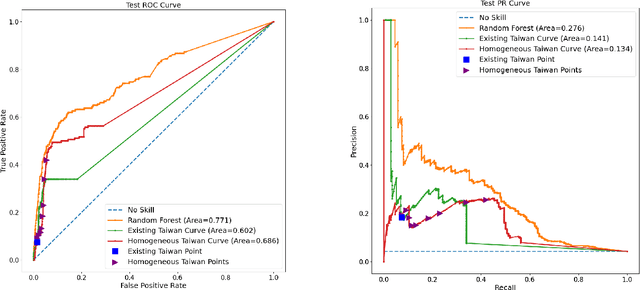
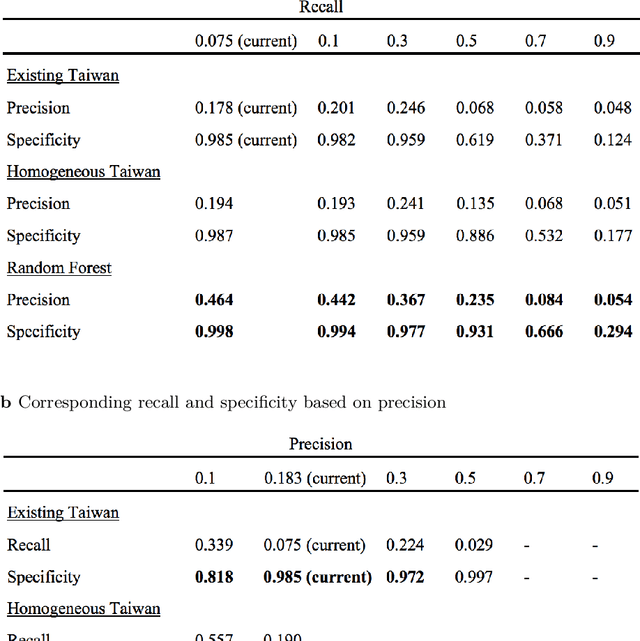
Abstract:Taiwan has the highest susceptibility to and fatalities from debris flows worldwide. The existing debris flow warning system in Taiwan, which uses a time-weighted measure of rainfall, leads to alerts when the measure exceeds a predefined threshold. However, this system generates many false alarms and misses a substantial fraction of the actual debris flows. Towards improving this system, we implemented five machine learning models that input historical rainfall data and predict whether a debris flow will occur within a selected time. We found that a random forest model performed the best among the five models and outperformed the existing system in Taiwan. Furthermore, we identified the rainfall trajectories strongly related to debris flow occurrences and explored trade-offs between the risks of missing debris flows versus frequent false alerts. These results suggest the potential for machine learning models trained on hourly rainfall data alone to save lives while reducing false alerts.
Routing algorithms as tools for integrating social distancing with emergency evacuation
Mar 05, 2021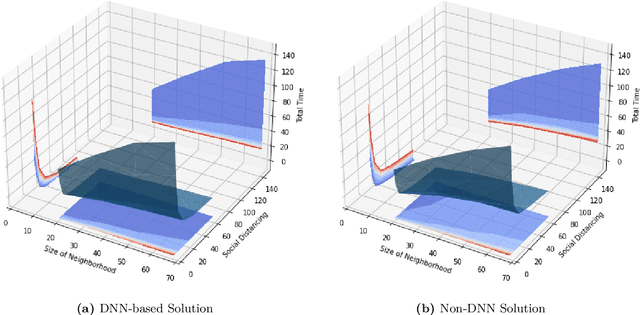
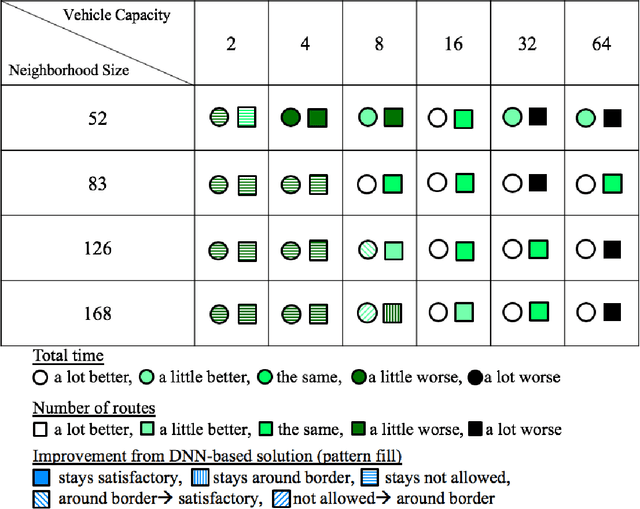
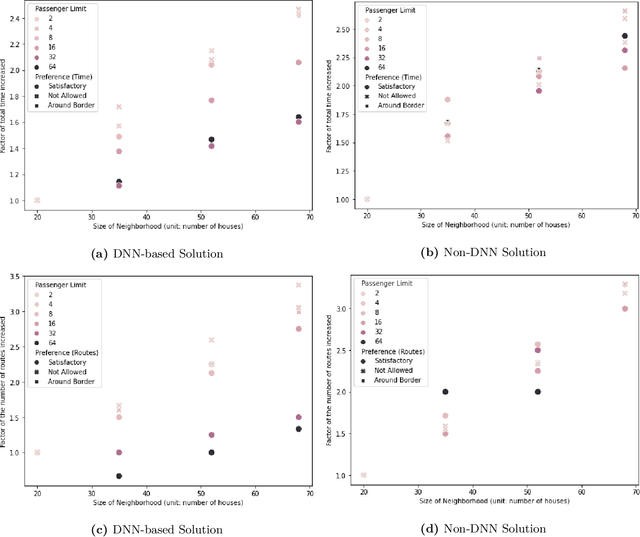
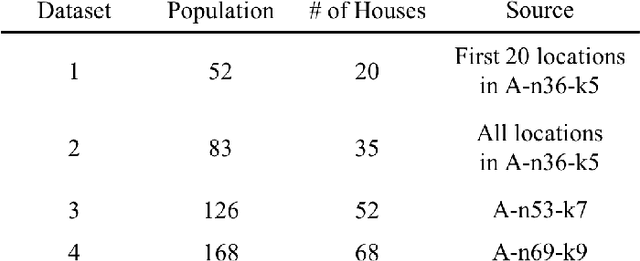
Abstract:In this study, we explore the implications of integrating social distancing with emergency evacuation when a hurricane approaches a major city during the COVID-19 pandemic. Specifically, we compare DNN (Deep Neural Network)-based and non-DNN methods for generating evacuation strategies that minimize evacuation time while allowing for social distancing in rescue vehicles. A central question is whether a DNN-based method provides sufficient extra efficiency to accommodate social distancing, in a time-constrained evacuation operation. We describe the problem as a Capacitated Vehicle Routing Problem and solve it using one non-DNN solution (Sweep Algorithm) and one DNN-based solution (Deep Reinforcement Learning). DNN-based solution can provide decision-makers with more efficient routing than non-DNN solution. Although DNN-based solution can save considerable time in evacuation routing, it does not come close to compensating for the extra time required for social distancing and its advantage disappears as the vehicle capacity approaches the number of people per household.
 Add to Chrome
Add to Chrome Add to Firefox
Add to Firefox Add to Edge
Add to Edge